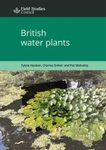About this book
Concern about future supplies of fresh water to society, to meet the full range of human needs, now comes very high on the priority list of global societal issues. An overarching issue which the book tries to address is whether global climate change is a dominant driver of change in the structure and function of natural aquatic ecosystems, or whether direct human population growth and accelerated consumption are playing an equal or greater role.
This book divides the aquatic realm into 21 ecosystems, from those on land (both saline and fresh water) to those of the open and deep oceans. It draws on the understanding of leading ecologists to summarise the state and likely condition by the year 2025 of each of the ecosystems.
Written for academic researchers and professionals, the aim is to put the climate change debate into a broader context as a basis for conservation science.
Contents
1. Introduction: Climate, people, fisheries and aquatic ecosystems Robert Engelman, Daniel Pauly, Dirk Zeller, Ronald G. Prinn, John K. Pinnegar and Nicholas V. C. Polunin; Part I. Flowing Waters: 2. Prospects for streams and rivers: an ecological perspective Bjorn Malmqvist, Simon D. Rundle, Alan P. Covich, Alan G. Hildrew, Christopher T. Robinson and Colin R. Townsend; 3. Groundwater ecosystems: human impacts and future management Janine Gibert, David C. Culver, Dan L. Danielopol, Christian Griebler, Amara Gunatilaka, Jos Notenboo and Boris Sket; 4. Flood plains: critically threatened ecosystems Klement Tockner, Stuart E. Bunn, Christopher Gordon, Robert J. Naiman, Gerry P. Quinn, Jack A. Stanford; Part II. Still Waters: 5. The future of small lakes and ponds Brian Moss, Christer Bronmark, Glen George, Lars-Anders Hansso and Erik Jeppesen; 6. Environmental trends and potential future states of large freshwater lakes Alfred M. Beeton, Robert E. Hecky and Kenton M. Stewart; 7. Salt lakes: values, threats, and future Robert Jellison, William D. Williams (deceased), Brian Timms, Javier Alcocer and Nikolay V. Aladin; Part III. Freshwater Wetlands: 8. The future of cool temperate peatlands Nils Malmer, Peter D. Moore and Michael C. F. Proctor; 9. Temperate freshwater wetlands: response to gradients in moisture regime, human alterations and economic status Mark M. Brinson, Barbara E. Bedford, Beth Middleton and Jos T. A. Verhoeven; 10. Present state and future of tropical wetlands Brij Gopal, Wolfgang J. Junk, C. Max Finlayson and Charles M. Breen; Part IV. Coastal Wetlands: 11. Saltmarsh Paul Adam, Mark D. Bertness, Anthony J. Davy and Joy B. Zedler; 12. Future of mangrove ecosystems to 2025 Richard S. Dod and Jin E. Ong; 13. Environmental future of estuaries Michael J. Kennish, Robert J. Livingston, Dave Raffaelli and Karsten Reise; Part V. Rocky Shores: 14. Rocky intertidal shores: prognosis for the future George M. Branch, Richard C. Thompson, Tasman P. Crowe, Juan Carlos Castilla, Olivia Langmead and Stephen J. Hawkins; 15. Current status and future trends in kelp forest ecosystems Robert S. Steneck, Rodrigo H. Bustamante, Paul K. Dayton, Geoffrey P. Jone and Alistair J. Hobday; 16. Projecting the current trajectory for coral reefs Tim R. McClanahan, Robert W. Buddemeier, Ove Hoegh-Guldberg and Paul Sammarco; Part VI. Soft Shores: 17. Sandy shores of the near future Alexander C. Brown (deceased), Karl F. Nordstrom, Anton McLachlan, Nancy L. Jackson and Douglas J. Sherman; 18. Seagrass ecosystems: their global status and prospects Carlos M. Duarte, Jens Borum, Frederick T. Short and Diana I. Walker; 19. Continental shelf benthic ecosystems - prospects for an improved environmental future Stephen J. Hall, Stuart I. Rogers and Simon F. Thrush; Part VII. Vast Marine Systems: 20. The marine pelagic ecosystem: perspectives on humanity's role in the future Peter G. Verity, John H. Steele, T. Frede Thingstad and Fereidoun Rassoulzadegan; 21. Polar and ice-edge marine systems Andrew Clarke, Andrew S. Brierley, Colin M. Harris, Dan Lubin and Raymond C. Smith; 22. The near future of the deep seafloor ecosystems Craig R. Smith, Lisa A. Levin, Anthony Koslow, Paul A. Tyler and Adrian G. Glover; 23. Synthesis: Trends and global prospects of the Earth's aquatic ecosystems Nicholas V. C. Polunin, Brij Gopal, Nicholas A. J. Graham, Stephen Hall, Venugopalan Ittekkot and Annette Muhlig-Hofmann.
Customer Reviews
Biography
NICHOLAS POLUNIN is Professor of Marine Environmental Science at the School of Marine Science & Technology in Newcastle. He is also President of the Foundation for Environmental Conservation.


































